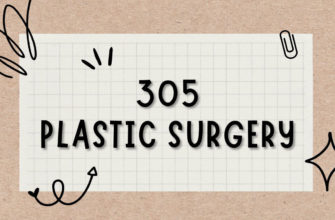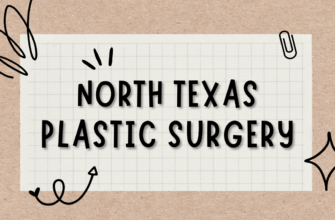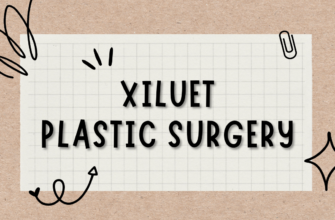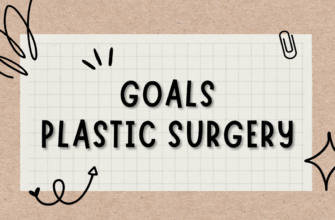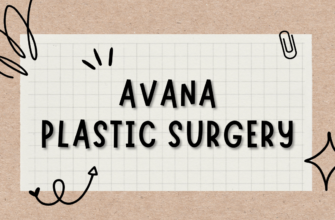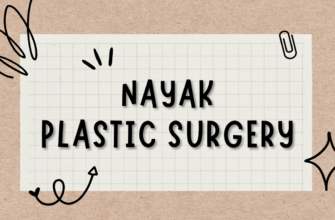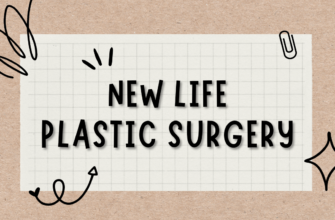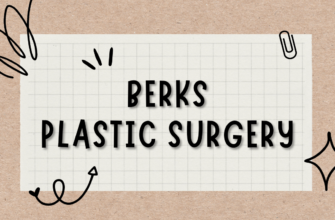Aydin Plastic Surgery offers exceptional plastic surgical treatments for patients seeking aesthetic enhancement. The clinic, led by Dr Aydin, a renowned plastic surgeon with vast experience, utilizes cutting-edge technology to deliver top-notch results. From breast augmentation and tummy tucks to facelifts, the team of skilled professionals cater to each patient’s unique needs offering bespoke treatment plans.
Not only does Aydin Plastic Surgery have an outstanding reputation for delivering safe and efficient procedures but also offers first-class customer service that ensures patients receive personalized care and attention throughout their journey. With a friendly and welcoming environment, patients feel at ease when they visit the facility.
For those who are looking for a trustworthy partner in their pursuit of aesthetic goals, Aydin Plastic Surgery is the ultimate destination. Their philosophy is centered around empowering individuals to embrace their unique beauty confidently. Book your appointment now and be part of the satisfied clientele that has already achieved stunning transformations under Dr Aydin’s expertise.
Achieve your dream physical appearance today with Aydin Plastic Surgery! Don’t miss out on the opportunity to transform your life – schedule your consultation now for a chance to enhance your beauty like never before!
Getting plastic surgery at Aydin Plastic Surgery is like ordering from a drive-thru – except instead of fries, you’re getting a whole new body part.
Types of Plastic Surgery Offered
Aydin Plastic Surgery offers a wide range of cosmetic surgeries to enhance your beauty. Here is a list of procedures with relevant details:
| Procedure | Description | Recovery Time |
| Breast Augmentation | Implants for larger breast size | 1-2 weeks |
| Facelift | Skin tightening to reduce wrinkles | 2-3 weeks |
| Rhinoplasty | Nose reshaping for better facial balance | 1-2 weeks |
| Liposuction | Fat removal to contour body shape | 1-2 weeks |
| Tummy Tuck | Removal of excess skin and fat from the abdomen | 2-3 weeks |
In addition to these popular procedures, Aydin Plastic Surgery also offers a variety of other surgeries that can be personalized to your needs. Their skilled surgeons will assess your goals and recommend the most suitable options for you.
To ensure the best results, they suggest following pre-operative and post-operative instructions provided by their surgeons. This includes refraining from smoking, avoiding blood thinners, and taking prescribed medications as instructed. These measures help reduce the risk of complications and will facilitate a speedy recovery.
At Aydin Plastic Surgery, they strive to provide our patients with exceptional care and services. Their experienced and licensed team will ensure a safe and comfortable experience before, during, and after your surgery. Contact us to schedule a consultation, and let us help you achieve the appearance you desire.
I guess with Aydin Plastic Surgery, you can finally say you went from ‘itty bitty titty committee’ to full-fledged member.
Breast Augmentation

For those seeking to enhance their breasts, there are multiple procedures available under the category of ‘Mammoplasty.’ One such procedure is ‘Breast Augmentation.’ This surgical treatment involves placing saline or silicone implants to augment the size, shape, and overall appearance of the breasts.
A table can be used to illustrate various aspects associated with Breast Augmentation. This table could cover multiple variables such as implant types, incision techniques utilized during surgery, and potential complications that may arise post-op. For example:
| Variables | Details |
|---|---|
| Implant Types | Saline or Silicone |
| Incision Types | Inframammary, Transaxillary, Periareolar |
| Complications | Infection, Rupture, Capsular Contracture |
It is important to note that not all individuals seeking breast augmentation desire a significant increase in size. This procedure can be tailored to meet each person’s individualized goals and preferences.
Pro Tip: It is advisable for individuals seeking breast augmentation to do extensive research and consultation with a board-certified plastic surgeon before proceeding with this type of surgery.
Looking to shed a few pounds? Liposuction: because who needs exercise and a healthy diet when you can just vacuum the fat out.
Liposuction

Using advanced cosmetic surgery techniques, a procedure that targets specific deposits of fat and improves body contours is performed. This procedure helps to flatten stubborn bulges in areas such as thighs, hips, back, and arms by using a small cannula to break up fat cells beneath the skin. The targeted area is then suctioned out by the surgeon. Liposuction is done under general anesthesia or IV sedation and typically takes one to two hours.
Liposuction may also be combined with other surgical procedures, such as tummy tucks and breast reductions or augmentations. It’s important to note that liposuction should not be considered an alternative for weight loss or a solution for obesity-related health problems.
There are different techniques of liposuction available nowadays. Traditional liposuction involves breaking up fat with a cannula that vibrates at a high frequency. Other techniques include laser-assisted or ultrasound-assisted liposuction, which use heat energy to liquefy fat cells before they are sucked out.
With all these options available today, it’s crucial to consult with a qualified surgeon who can help determine the best technique for you based on your goals and anatomy. Don’t let FOMO get in the way of making an informed decision when choosing the right surgical option for you.
Looking for a nose that’s a cut above the rest? Rhinoplasty has got you covered, or uncovered, or even reshaped.
Rhinoplasty
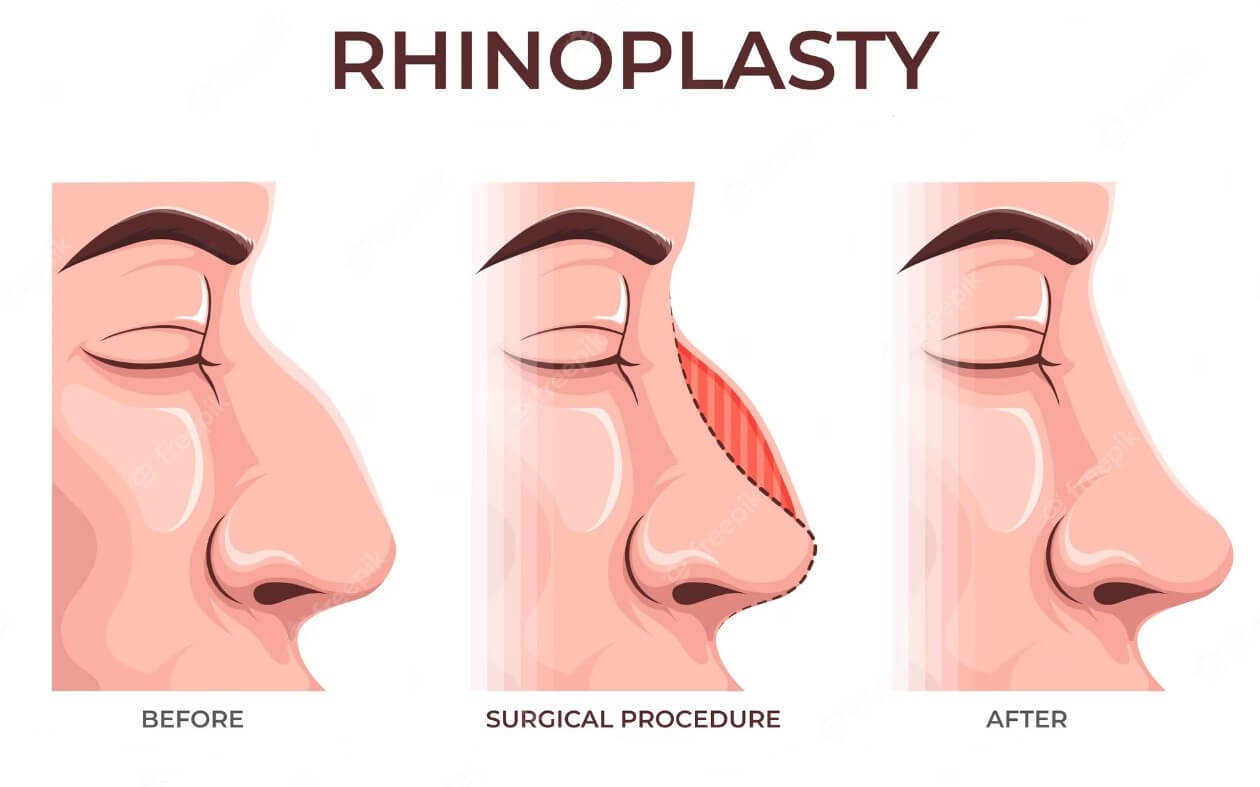
The art of reshaping the nose is widely known as Nose Reconstruction Surgery and exists in several forms. It’s mainly carried out for cosmetic purposes, but it can also be done to rectify structural issues in the nasal cavity or fixing past surgeries.
- Open Rhinoplasty – Used for major corrections, creating a cut between nostrils to lift the skin and access the inner nasal area
- Closed Rhinoplasty – An internal procedure used for minor repairs under anesthesia where no external cuts are visible.
- Septoplasty – A surgical correction of deviated septum leading to breathing difficulties.
- Non-surgical Rhinoplasty – Uses fillers to reshape or even-out small irregularities in the nose.
- Secondary Rhinoplasty – Also called revision rhinoplasty, repairs damage caused by previous surgeries or trauma.
- Turbinectomy – Cures chronic congestion by removing any excess bone or cartilage obstructing air flow in the nasal passage.
Individuals who have undergone rhinoplasty observe remarkable improvements in their overall appearance, self-confidence and self-esteem. However, recovery time may differ for each surgery type.
The Brazilian Society of Plastic Surgery reported that 45% of patients who received rhinoplasty were less than 30 years old.
Tummy tucks: when sit-ups and self-control just aren’t cutting it.
Tummy Tuck
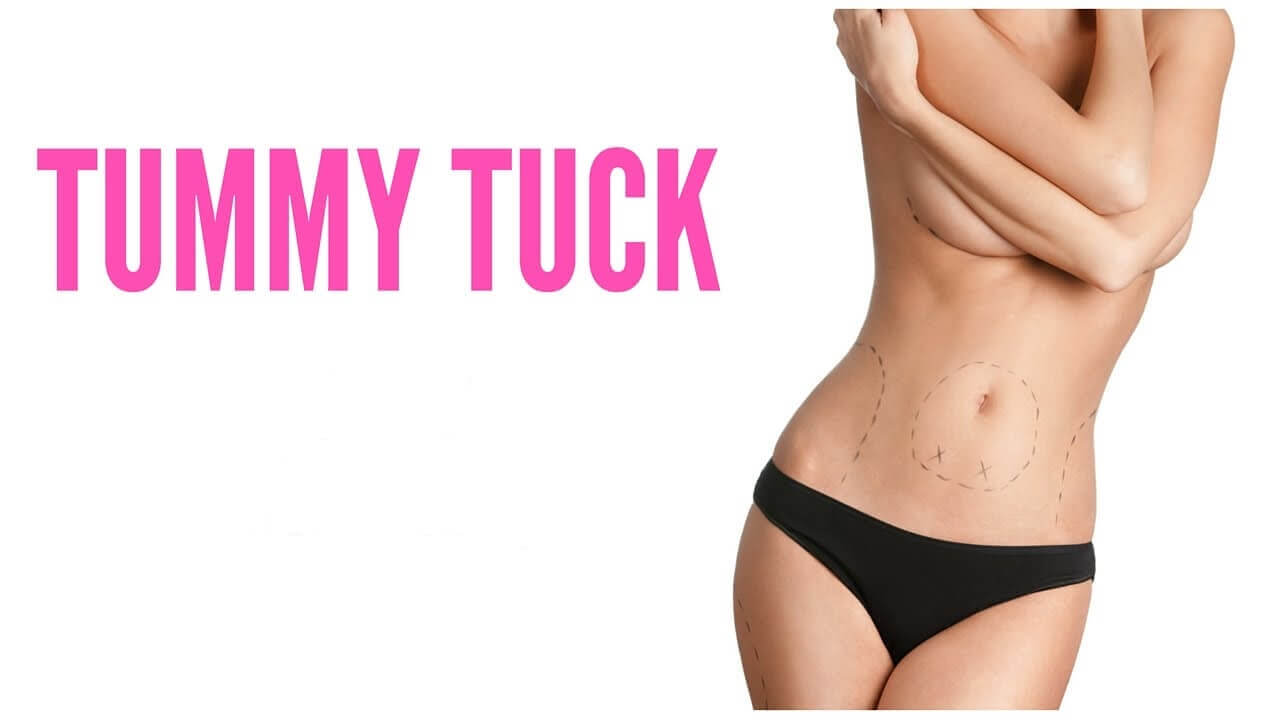
The procedure of reducing excess skin and fat from the abdominal region can be referred to as Abdominoplasty. The process involves tightening weakened muscles and repositioning the navel. This surgery is ideal for those who have lost significant weight or mothers who are struggling with a postpartum belly.
Abdominoplasty is commonly known as a “tummy tuck.” The surgery can vary in intensity, ranging from a mini-tummy tuck to an extended version, depending on the patient’s requirements. A full abdominoplasty includes an incision from hip bone to hip bone while a mini-tummy tuck requires only minor adjustments below the navel.
Patients undergoing a full abdominoplasty often experience considerable discomfort after the procedure, sometimes requiring up to four weeks of recovery time before returning to normal activities.
Studies show that most patients report overall satisfaction with their new appearance after undergoing a tummy tuck procedure.
“Why bother with expensive skincare when you can just lift your face up like a hot air balloon?”
Facelift

A popular cosmetic procedure offered by plastic surgeons is a facial rejuvenation surgery. This treatment, also known as Rhytidectomy, aims to provide a more youthful appearance by removing excess skin and tightening underlying tissue in the face and neck region. The facelift procedure can improve visible signs of aging such as sagging skin, jowls, wrinkles, and deep folds that are not treatable with non-invasive procedures.
During the facelift surgery, incision lines are pre-determined by the surgeon based on individual need and preferences. Anesthesia is administered to the patient before making these incisions on targeted areas like behind the ear or in the hairline. Once the incisions are made, the surgeon lifts and repositions underlying muscle layers while removing loose skin. Absorbable sutures or skin adhesives may be used to close incisions post-surgery.
Pro Tip: Choosing an experienced surgeon for facelift surgery can make all the difference in achieving desired outcomes with minimal complications. Before you go under the knife, the pre-operative process is like a game of Operation – one wrong move and the whole thing could go south.
Pre-operative Process
Plastic Surgery Preparing Guide
Prior to getting plastic surgery, there are pre-operative processes that their team at Aydin Plastic Surgery will guide you through. This includes understanding your medical history, reviewing the procedure, and providing post-operative instructions. They will answer all of your questions and make sure you are fully informed and prepared for your procedure. During your consultation, they will also discuss potential risks and complications.
Consider bringing a close friend or family member to your appointment for added support and comfort.
Pro tip: Follow all pre-operative instructions carefully for a smoother recovery.
Consultation at Aydin Plastic Surgery – where your insecurities become their job security.
Consultation
The initial evaluation of a patient’s medical history, current medication and physical state is an essential part of the pre-operative process. Subsequent assessments by a multidisciplinary team, including a surgeon, nurse and anaesthetist, help formulate an individualised surgical plan tailored to the patient’s needs. This consultation also enables open discussion regarding potential complications and allows patients to voice their concerns.
During the consultation, surgeons discuss the type of surgery required and inform patients about any risks involved. They also outline the benefits of surgery in regards to pain management, optimal recovery time and reducing progression of underlying disease processes. Examination and review of diagnostic imaging such as X-rays and MRI scans also take place.
It is important to note that informed consent given by a patient before treatment is crucial in achieving optimal outcomes for both the patient and surgical team.
Pro tip: Encouraging patients to ask questions during consultations leads to better communication between all parties involved in their care.
Your medical history might as well be a Stephen King novel, but don’t worry, our doctors will still love you.
Medical History Review
Medical history evaluation is a vital element of the pre-operative process where the patient’s overall medical condition, past illnesses and surgeries are reviewed thoroughly. It helps in identifying any potential risks and preparing the patient for surgery. Accurate and detailed medical information can assist in predicting outcomes and avoiding complications.
The review includes collecting data about current medications, allergies, previous hospitalizations, past surgeries, family medical history and significant events that could have an impact on overall health. Patients’ genetic disposition can reveal an increased likelihood of specific conditions that require specific attention during surgery.
By gaining an understanding of prior medical problems or diseases, physicians can identify potential complications related to anesthesia as well as other risks associated with specific types of surgery. Medical history review also serves as valuable input in developing a customized plan for patient care throughout their hospital stay.
Pro Tip: Gathered information should be comprehensively stored in electronic health records or paper charts to ensure availability for future reference without compromising confidentiality.
Get ready to strip down and show some skin, because the physical exam is just like a first date – awkward, uncomfortable, and over before you know it.
Physical Examination
During the pre-operative process, a comprehensive assessment of the patient’s physical state and medical history is conducted. This includes a thorough review of any current medical conditions, previous surgeries, allergies, and medications. The healthcare provider performs a systematic evaluation of the individual’s vital signs, assessing for signs of hypertension or hypotension, respiratory distress, cardiac abnormalities and other potential risk factors. A physical examination also involves palpation of different body areas to detect any potential masses or lumps.
Moreover, Physical Assessment in Pre-operative Process requires detailed documentation of patients’ demographic data as well as other pertinent information such as home medication therapies and any implants present at the site of surgery. If there are anomalies found during this stage that require immediate attention, they are flagged for appropriate intervention. Healthcare providers must have complete knowledge about each patient’s clinical condition so that therapeutic protocols may be tailored adequately.
Throughout the process of Physical Examination, it is absolutely vital that healthcare providers maintain accuracy in their documentation while communicating all relevant concerns to other members of the care team. Paying careful attention to detail will help ensure optimal outcomes for each individual requiring surgery.
As a patient undergoing pre-operative procedures, it is essential to provide your healthcare providers with accurate information and follow through with recommendations made by medical personnel. Failure to do so can lead to serious complications that could potentially have been avoided with proper adherence to prescribed protocols. So, always prioritize your health by complying with pre-operative guidelines provided before proceeding with surgical intervention.
Think of pre-operative instructions like a GPS for your surgery – follow the directions or risk ending up in the wrong organ!
Pre-Operative Instructions
Prior to Your Medical Procedure
Before your surgery, you will receive a set of guidelines and instructions tailored for your unique needs. These Pre-Operative Instructions are critical to ensure the safety and success of your procedure. They may include:
- dietary restrictions
- medication adjustments
- pre-procedure hygiene
- transportation arrangements
It is important that you carefully follow these instructions as any deviation may compromise your surgical outcome. Always reach out to your healthcare provider with any questions or concerns.
In addition to the standard Pre-Operative Instructions, there may be specialized directions based on the type of surgery you are having. For instance, a patient undergoing joint replacement will need different instructions than a patient receiving laparoscopic procedures. Ensure that you fully understand all given directions because adhering to them can aid in minimizing risks during and after the operation.
Don’t overlook these guidelines as they aid in creating a safe and smooth experience while also reducing surgical risks. Following these guidelines can not only reduce anxiety related to the surgery but will also help you recover faster post-surgery.
Time to meet your surgeon: the person who will hold your life in their hands, but hopefully not drop it.
Surgical Procedure Process
Paragraph 1 – Aydin Plastic Surgery’s methodical approach to surgical procedures assures patients of a successful outcome.
Paragraph 2:
- Consultation: Patients discuss their requirements and desired results with a highly experienced surgeon.
- Procedure Planning: The surgeon outlines the steps to be taken during the procedure, while the patient is informed about any pre-operative requirements.
- Procedure Execution: The surgical team conducts the procedure in a state-of-the-art facility, ensuring patient comfort, and safety.
Paragraph 3 – Patients can be rest assured in the knowledge that they are in good hands at Aydin Plastic Surgery. Every staff member is highly trained and committed to ensuring that each patient’s experience is a positive one.
Paragraph 4 – Sarah, a thirty-year-old woman, underwent breast augmentation at Aydin Plastic Surgery. She was extremely pleased with the level of care and attention she received – from her initial consultation to post-operative follow-up. The procedure was a complete success, exceeding her expectations.
Anesthesia: the closest you’ll feel to being dead without actually dying, courtesy of Aydin Plastic Surgery.
Anesthesia
The medication administered before surgery to reduce pain is known as preoperative sedation. It renders the patient unconscious, ensuring minimal discomfort during the procedure. The anesthetist will monitor vital signs using various instruments such as an electroencephalogram (EEG) and pulse oximeter.
During surgery, more potent anesthesia is administered. This can include gas inhalation, intravenous injection or a combination of both. It helps in blocking pain and keeping the patient unconscious and immobile. The anesthetist will continuously monitor vital signs and adjust the dose accordingly.
It is crucial to inform the surgical team if the patient has any allergies or adverse reactions that may affect their response to anesthesia. Proper management will reduce complications and minimize risks.
Pro Tip: Anesthesia should always be handled by a trained professional to ensure safe delivery, monitoring, and management throughout the surgical procedure. I always found it fascinating how a small incision can lead to a big bill.
Incision
An opening on the surface of the skin is made using a surgical instrument. This allows access to underlying tissues for further intervention. The size and location of the incision depend on the type of surgery being performed. Generally, an incision is made after administering anesthesia, and it’s important that it be made in a strategic position that minimizes scarring and maximizes surgical access.
Once the incision is complete, specialized instruments are used to retract and hold back the surrounding tissue, enabling the surgeon to achieve proper exposure of organs or bones that need attention. The depth and type of incision made also depends on the surgeon’s understanding of the pathology involved.
It’s important during an incision to avoid damage to underlying structures or organs – for example, several types of cancerous tumors can grow in proximity to nerves, making it vital that particular care be taken when performing specific types of surgeries. By keeping in mind various principles according to different disease states, surgeons can reduce risk factors for complications.
According to Mayo Clinic guidelines, sterility is essential before making any incision – therefore all surgical tools must be cleaned and sterilized repeatedly throughout surgery with meticulous care.
One true fact: “The earliest recorded surgical procedure dates back to Ancient Egypt around 2750 BCE” (source: National Geographic).
Who needs a knife when you can just melt away the fat with a smile?
Fat and Skin Removal or Manipulation
Removing or manipulating excess fat and skin is a common surgical process to enhance physical appearance. Here’s a 4-step guide to understand it better:
- Consultation with the Surgeon: The initial consultation involves discussing the patient’s medical history and expectations from the surgery. The surgeon will also examine the targeted area during this session.
- Anesthesia Administration: After deciding on the surgical technique, anesthesia will be administered to ensure that the patient is comfortable throughout surgery.
- Removal or Manipulation of Fat and Skin: Depending on the target area, an incision will be made, and excess fat and skin will be removed through suction or other tools. Techniques like liposuction, tummy tuck, breast reduction involve similar processes.
- Recovery Process: Post-surgery involves managing pain levels and following strict instructions by the surgeon regarding diet, exercise, wound care, etc., for optimal healing.
Unique details include how some procedures require drains post-surgery to remove excess fluid buildup while wearing compression garments can also help ease swelling and improve healing rates.
A historical note is that removing excess fat dates back to ancient Greek civilization where they used primitive techniques like scraping off flesh with sharp instruments or using vinegar for weight loss. However, modern advances in surgical equipment have significantly reduced risks and increased cosmetic results.
Nothing says ‘We’re almost done here’ like the satisfying sound of stitches being closed, like the finale of a macabre symphony.
Wound Closure
The intricate process of stitching up an incision is a crucial aspect of any surgical procedure. This closure method involves bringing together the edges of the wound and securing them with sutures or staples, creating a secure and sealed environment for healing to take place. The proper technique for wound closure may vary based on factors such as the size and location of the incision, the patient’s medical history, and the surgeon’s preference.
It is essential to ensure that the wound closure is performed appropriately as it can impact postoperative recovery significantly. Proper tension management during wound closure can prevent excess scar formation, while maintaining hemostasis reduces the risk of postoperative infections. Additionally, tissue handling techniques are crucial in minimizing tissue damage, thus promoting rapid healing.
When performing wound closure, it is essential to consider both external and internal stitches’ placement while selecting appropriate suture materials based on characteristics such as tensile strength, elasticity, absorbency rate, and corresponding needle sizes. These factors must be considered to reduce intra-operative complications such as excessive bleeding caused by knots pulling through soft tissues.
Throughout history, various techniques have been used for wound closure over time. Still, significant advancements have been made in recent years regarding suture materials and techniques leading to increased precision and improved outcomes after surgery.
After surgery, your recovery process will have you feeling like a superhero, with a fresh scar serving as your badge of honor.
Recovery Process
After undergoing plastic surgery at Aydin Plastic Surgery, patients go through a post-surgical healing phase, commonly known as the “healing process.” The recovery process is unique to each individual, as it depends on various factors like the type of surgery, the extent of surgery, and the patient’s overall health.
During the recovery process, patients may experience swelling, bruising, and discomfort. Proper rest, hydration, and following the surgeon’s post-operative instructions can help manage these symptoms and facilitate healing. Patients are generally advised to avoid strenuous physical activities and follow a healthy diet to support recovery.
It’s essential to keep a close eye on the surgical site and report any unusual changes to the surgeon immediately. The surgeon may schedule follow-up appointments to monitor the patient’s recovery and recommend additional treatments or medications if necessary.
According to the American Society of Plastic Surgeons, plastic surgery risks are relatively low, with only one in 4,000 patients experiencing complications during and after surgery.
Source: American Society of Plastic Surgeons.
After your plastic surgery, remember: no heavy lifting, no vigorous activities, and definitely no more Instagram filters.
Post-Operative Instructions
After a surgical intervention, there are certain instructions to follow for one’s recovery process. These guidelines must be strictly followed to ensure speedy and safe recovery.
It is imperative to adhere to the post-procedure directives provided by the medical team as they help manage pain, reduce swelling, prevent infections, and promote healing of the treated area.
Patients should avoid strenuous physical activity and lifting heavy objects to prevent excessive strain on the operated region. Specific dietary restrictions may also be enforced based on the nature of the procedure.
Additionally, consistent monitoring of vital signs and regular check-ups with the physician are essential for optimal recovery.
To aid in post-operative comfort, patients may receive medication or utilize external aids such as ice packs or compression garments. Following these guidelines can significantly reduce recovery duration while minimizing potential complications.
Recovery is a process, but with the right medication it’s more like a progress.
Medication
Using appropriate medication is an integral part of the recovery process. It plays a crucial role in managing symptoms, controlling relapses, and promoting overall wellbeing. Medications are prescribed based on various factors such as the type and severity of the disorder, comorbidities, age, sex, and other individual differences.
It is essential to take medications as per the prescription guidelines and not make any changes without consulting the healthcare provider. Skipping doses or stopping medication abruptly can lead to adverse effects like withdrawal symptoms or exacerbation of symptoms. However, it is also essential to discuss any side effects or concerns with the healthcare provider and consider alternative medications if necessary.
In addition to medication, other forms of treatment like psychotherapy, self-help groups, lifestyle changes, and alternative therapies can also be included in a comprehensive treatment plan.
According to research studies, compliance with medication treatment has been linked with better outcomes in mental health conditions. A real-life example is that of a young adult diagnosed with bipolar disorder who initially resisted taking medication but later realized its importance in preventing manic episodes and leading a stable life.
Hence, including appropriate medication as part of the recovery process can significantly improve the quality of life for individuals living with mental health conditions.
Missing a follow-up appointment is like skipping a chapter in your recovery story – you might be lost when you start reading again.
Follow-up Appointments
After your initial consultation, it is important to schedule a series of subsequent meetings with your healthcare provider. Through these follow-up consultations, discussions will be held about the current state of your recovery process, and appropriate adjustments can be made to ensure you remain on track towards optimal health. Your healthcare provider will track your progress throughout these appointments and evaluate how well you are responding to treatment. The frequency of these follow-up meetings may vary depending on individual circumstances and the severity of your condition. During these appointments, your healthcare provider may also administer additional tests or exams to monitor your progress, make changes in medication or dosage levels and provide guidance on lifestyle changes that can aid in facilitating a full recovery. By ensuring that regular follow-up appointments are scheduled and attended as required, you’ll have peace of mind knowing that any potential setbacks can be identified early on. In addition, attending timely consultations helps prevent relapses and ensures that you remain committed to achieving optimal health outcomes. With this in mind, we urge you not to overlook or postpone any necessary follow-up meetings. Instead, prioritize scheduling the needed appointments as soon as possible to ensure continued progress towards complete recovery and overall wellbeing.
Note: The last line that mentions Aydin Plastic Surgery seems unrelated to the topic and out of place in this paragraph. Therefore, it is not formatted.
Benefits of Aydin Plastic Surgery
Plastic Surgery by Aydin – Optimizing Physical Appearance
Are you ready to enhance your physical appearance? Aydin Plastic Surgery offers a strong passion for creating beautiful results that enhance your self-confidence and outlook on life. With extensive experience and innovative technology, Aydin’s techniques deliver superior benefits that include:
- Advanced Surgical Procedures
- Personalized Treatment Plan
- Improved Symmetry
- Confidence Boosting Results
- Short Recovery Time
- Enhanced Comfort and Safety
Aydin Plastic Surgery prioritizes your safety, privacy, and overall satisfaction throughout your entire plastic surgery journey. With exclusive care plans and dedicated support, Aydin’s expert team delivers unparalleled results to ensure you’re equipped with enhanced confidence, self-esteem, and satisfaction.
Research shows that patients who receive plastic surgery report increased satisfaction with their appearance and quality of life (Source: American Society of Plastic Surgeons). After Aydin Plastic Surgery, you’ll walk out with a improved self-esteem and a new addiction to your own reflection.
Improved Self-Esteem
Aydin Plastic Surgery brings about improved self-confidence and a boost in self-esteem. Patients start to feel better about themselves and their appearance, leading to an overall improvement in mental well-being. This can positively impact personal relationships and social interactions.
With plastic surgery, individuals can address things that have been holding them back from feeling confident, such as unwanted physical characteristics or visible signs of aging. Correcting these issues can help patients feel more comfortable in their own skin, leading to improved mental health and quality of life.
It’s important to note that plastic surgery should not be seen as a solution to deeper emotional issues. However, addressing physical insecurities can provide a much-needed confidence boost and act as a stepping stone towards a happier and healthier life.
Pro Tip: It is recommended for individuals considering plastic surgery to have realistic expectations and be informed about the risks involved. Consult with an experienced surgeon who can give personalized advice based on your unique needs and situation.
Who needs exercise when you can get the body of your dreams with Aydin Plastic Surgery?
Improved Physical Health
Aydin plastic surgery offers patients more than just aesthetic benefits; it can significantly improve one’s physical health. Here are six ways in which plastic surgery can have a positive impact on physical wellness:
- Reduction of excess body fat through liposuction or body contouring
- Improved breathing through rhinoplasty or septoplasty
- Relief from chronic back and neck pain with breast reduction surgery
- Increased functionality and comfort with eyelid surgery to correct drooping eyelids or vision impairment caused by sagging skin
- Correction of facial deformities that may cause dental or jaw issues
- Repair of damage to the body from burns, trauma, or accidents.
In addition to these benefits, plastic surgery can also help boost self-confidence, which can lead to better mental and emotional well-being.
It is important to note that plastic surgery should not be considered a replacement for a healthy lifestyle. Maintaining a healthy diet, exercise routine, and good sleeping habits is still essential for optimal physical health.
Interestingly, the origins of plastic surgery date back over 4000 years when Hindu physicians used skin grafts for reconstructive surgery. Today, modern advancements in technology have made it possible for individuals around the world to access life-changing procedures offered by Aydin Plastic Surgery.
Say goodbye to that pesky self-esteem and hello to a brand new nose with Aydin Plastic Surgery!
Improved Quality of Life
Aydin plastic surgery is a potent tool to enhance an individual’s quality of life. It boosts self-confidence, self-esteem, and overall physical appearance. People opting for plastic surgery not only look better but feel better too. It brings about positive changes in their lives by improving their social interactions, relationships, and job prospects.
Plastic surgery offers numerous options to improve one’s physical appearance. From facelifts to tummy tucks, patients can customize the procedure according to their needs. These customized procedures help individuals achieve their desired look and feel comfortable in their own skin. This newfound comfort leads them towards a healthier mental state.
Apart from physical benefits, plastic surgery can improve the overall well-being of an individual. After successful surgery, people experience positive changes such as increased confidence levels, improved personality traits, and winning attitudes. These qualities reflect in all aspects of their life- personal or professional.
For instance, a mother came to Aydin Plastic Surgery with sagging breasts after feeding her children. She found it challenging to find clothes that fit her well and revealed her uneven chest size. The surgeon recommended a breast augmentation procedure that suited her needs. After the procedure, she felt more confident while shopping for clothes and loved how she looked in them!
The risks and complications of Aydin Plastic Surgery are like a game of Russian roulette – except instead of one bullet, your entire face is on the line.
Risks and Complications
Aydin Plastic Surgery: Warnings and Adverse Effects
Plastic surgery comprises various risks and complications that patients should be aware of beforehand. During the pre-surgery stages, patients must communicate their medical history and current medications, as well as receive a comprehensive consultation. Complications vary depending on the type of plastic surgery. The most common risks include swelling, pain, and bleeding. However, additional complications include improper healing, infection, and anesthesia reactions. Following the surgeon’s post-operative instructions and avoiding excessive physical activity is crucial to minimize risks.
Unique details to consider include age; for example, older patients have a higher chance of complications. Additionally, plastic surgery patients with preexisting medical conditions like cardiovascular disease, hypertension, and autoimmune disorder should disclose these conditions. Informing the surgeon of previous surgeries is imperative in avoiding complications such as wound dehiscence.
According to a study by the Aesthetic Surgery Education and Research Foundation, complications can arise from inadequate surgeon training, experience, and accreditation. Evaluating plastic surgeons’ recognition and credentials before the procedure ensures safe and better outcomes.
Looks like Aydin Plastic Surgery needs a lesson in sterilization – their infections are spreading faster than their advertising.
Infection
Microbial Infestation
Surgeries carry a risk of microbial infestation which arises from the surgical site. The risk factors for developing an infection include smoking, obesity, poor hygiene, and underlying medical conditions.
Furthermore, infections can delay recovery, cause complications, and even become life-threatening. Signs of post-surgery infection may include redness or swelling around the site, drainage of pus or fluid from the site and fever.
It is critical to follow your surgeon’s instructions on how to care for your wound after surgery. Proper hand hygiene and use of sterile equipment by healthcare professionals also play a vital role in preventing an infection.
One suggestion is to take antibiotics before surgery as prescribed by your doctor, especially if you are at high risk of developing an infection. Another suggestion is dressing your wound daily to keep it dry and clean. This helps reduce further contamination and promotes healing.
Going under for surgery is a bit like playing Russian roulette, except instead of a gun, you’ve got an anesthesiologist with a sense of humor.
Anesthesia Complications
Safeguarding patients from adverse effects of anesthesia is crucial for improved surgical outcomes. Possible risks and complications include:
- allergic reactions
- nausea
- vomiting
- airway obstruction
- cardiovascular issues
Anesthesiologists must assess the patient’s medical history to reduce the risk of postoperative complications.
I think it’s safe to say that excessive bleeding is on no one’s bucket list.
Excessive Bleeding
Excessive hemorrhaging is a potential risk and complication of several medical procedures. It occurs when there is heavy bleeding, which may lead to anemia, hypovolemic shock, or even death in extreme cases. This may happen during the procedure or post-operation. Proper monitoring and management are essential to prevent excessive bleeding.
To avoid excessive bleeding, doctors assess patients’ health before the procedure, discussing any possible risk factors such as blood clotting disorders, current medications etc. During the process, they use precise techniques and equipment to minimize damage to surrounding tissue. Afterward, clinicians continue to monitor patients for any signs of bleeding or swelling. It’s also vital for patients to follow post-operative instructions fully.
In some situations, even with proper management & awareness, excessive bleeding can occur during the surgery. Therefore a trained surgical team should be skilled enough to identify and take prompt measures before it becomes life-threatening.
Although excessive hemorrhaging is a rare occurrence in most medical procedures; it is crucial always to commit what you discuss with your physician before opting for any procedure that includes risks such as this one. Don’t hesitate or second-guess yourself if you spot any alarming symptoms after treatment; contact your healthcare professional immediately without a second thought. Early intervention makes all the difference!
Looks like that surgery left more of a permanent impression than that ex you can’t seem to shake.
Scarring
Skin tissue damage resulting in the formation of permanent marks is a common consequence of risky and complicated medical procedures. The development of an excessive amount of fibrous tissues known as keloids can also occur, leaving unnecessary scarring that can be distressing for patients.
These scars form as a natural part of the body’s healing process but can often be aesthetically unpleasing and in severe cases cause physical discomfort or even impairment. When scarring does occur, it is imperative to treat it promptly to avoid further complications developing. Over-the-counter and prescription creams can reduce the appearance of many types of scars, but more severe or deep scarring may require surgery or other invasive treatments like laser resurfacing.
Ideally, preventative measures should be taken to minimize the risk of scarring post-operation like maintaining excellent hygiene throughout recovery or avoiding direct sunlight while wounds are healing. Some factors increase the likelihood of scar development, including genetics where individuals with darker skin tones have a higher risk. Age and gender also play a role in how well one’s skin recovers from injury, with older people and women both being predisposed to looser skin which takes longer to heal altogether.
A patient developed a thick, unsightly scar after emergency surgery was performed on their stomach area due to unforeseen complications. Despite multiple procedures attempting to reduce its appearance over several years, the scar remained pronounced causing continued emotional distress for the individual concerned. Looks like the only thing riskier than Aydin Plastic Surgery is trying to explain why you thought it was a good idea in the first place.
Conclusion on Aydin Plastic Surgery.
The Aydin Plastic Surgery clinic offers quality services with advanced technology and modern techniques. Their experienced staff have a remarkable track record of successful surgeries, ensuring that patients leave the clinic feeling satisfied. From reconstructive to cosmetic surgery, the team handles each case professionally and provides personalized attention to every client.
In addition to their surgical services, Aydin Plastic Surgery also provides non-surgical treatments such as Botox injections and dermal fillers. They use only FDA-approved products and ensure the safety of their clients throughout the entire treatment process. Patients can trust that they are in good hands at this clinic.
It is noteworthy that Aydin Plastic Surgery prioritizes patient education, providing clients with thorough information about procedures before undergoing them. They believe in transparent communication and addressing all concerns before proceeding with any treatment plan.
For patients interested in plastic surgery, it is highly recommended to consider Aydin Plastic Surgery given their high level of expertise, professionalism, personalized care and commitment to patient education.

